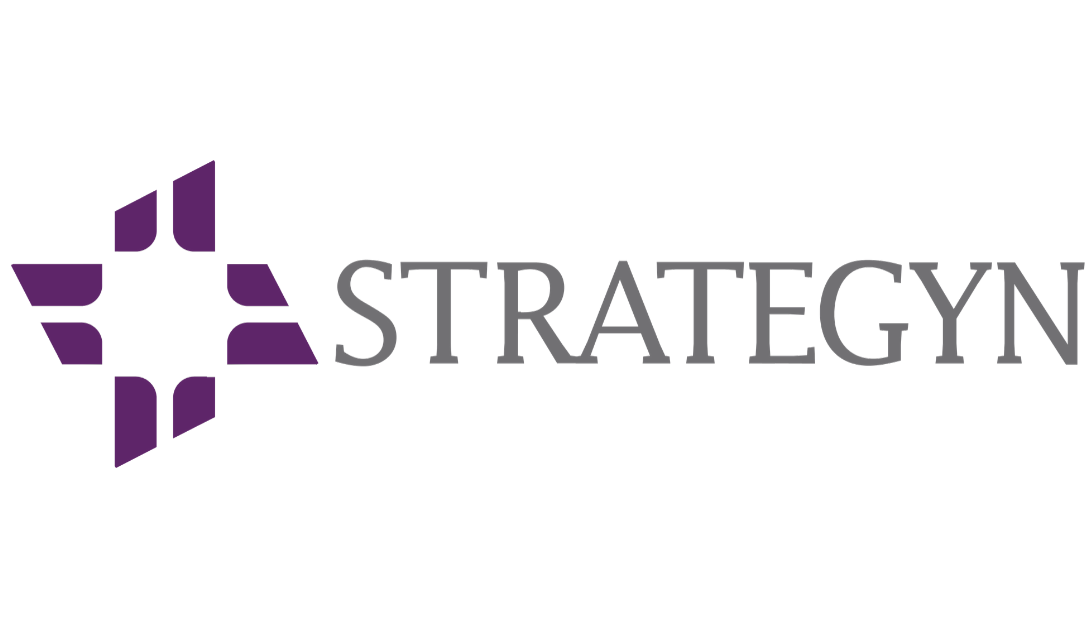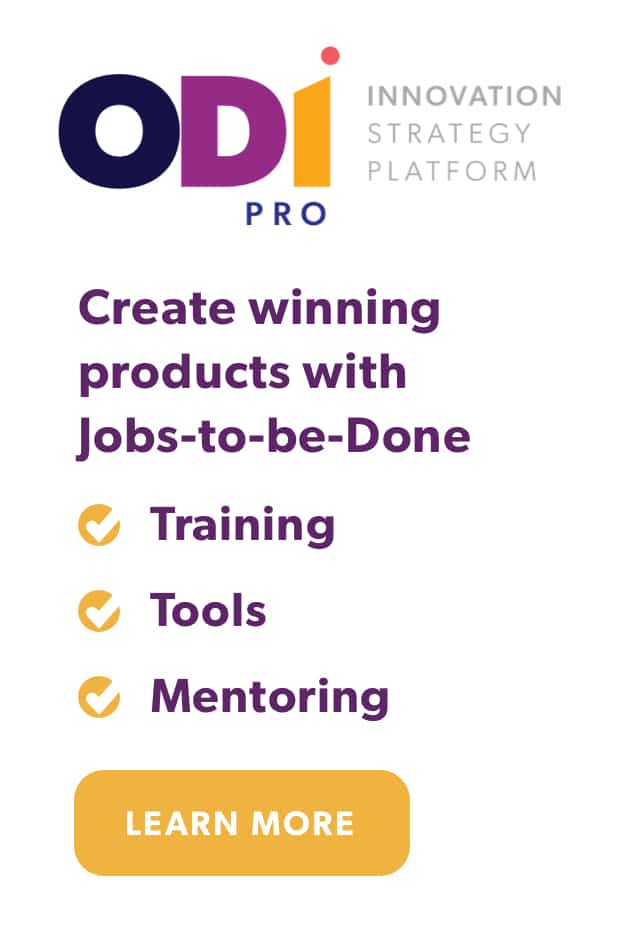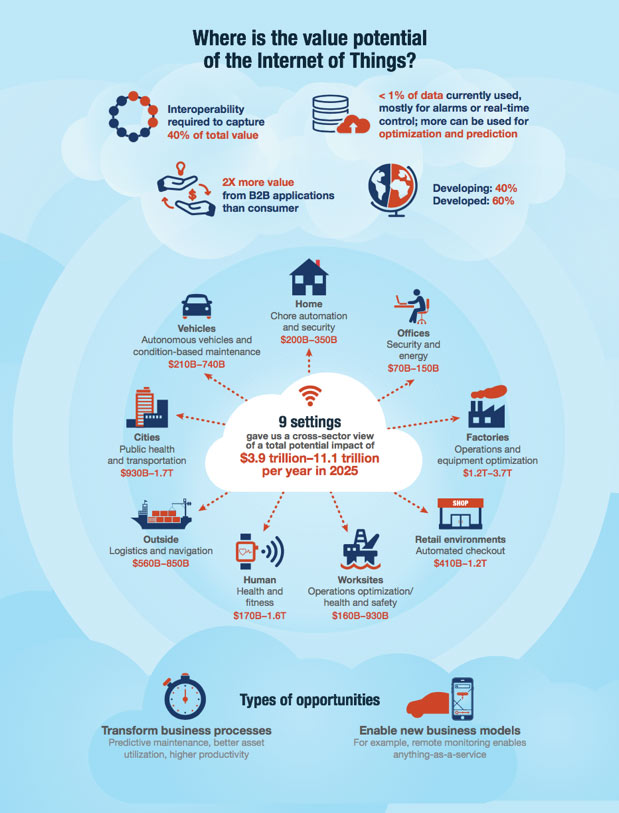The Internet of Things, according to Wikipedia, allows objects to be sensed and/or controlled remotely across existing network infrastructure, creating opportunities for more direct integration of the physical world into computer-based systems, and resulting in improved efficiency, accuracy and economic benefit. The vision of the Internet of Things has evolved due to a convergence of multiple technologies, including ubiquitous wireless communication, real-time analytics, machine learning, commodity sensors, and embedded systems.
By 2020, there will be 50 billion devices connected to the Internet. How will you and your organization capitalize on this opportunity?
source: McKinsey Global Institute
For the Internet of Things to progress in any of these “9 settings” shown in the diagram, companies need to keep in mind one very important reality: this progress will only result if the new IoT solutions help customers get a job done better and/or more cheaply. This is the essence of innovation.
From what I have seen to date, companies have taken a more traditional ideas-first approach to getting started in the IoT arena. But as we have learned over the years, developing numerous ideas without a deep understanding of the jobs-to-be-done framework just makes the business challenge that much more challenging. It’s much better to start with a clear understanding of the need you’re trying to solve. To this end, the success of those initiatives will be far more likely and far more profitable if the companies pursuing them start with a deep understanding of the jobs the target customers are trying to get done.
Companies should begin by uncovering all the jobs that customers are trying to get done in each of the “9 settings.” In work that we have done in Smart Farming, for example, one job we studied was the job of “growing a crop.” Following our Outcome-Driven Innovation process, we deconstructed the job into its process steps and learned from growers precisely what metrics they use to measure success and value when getting the job done. These metrics (which are specially constructed need statements we call desired outcomes) are the metrics that growers use to measure how well products help them get the job done. With insight into how customers measure value, creating it becomes measurable and predictable.
We learned that many of the underserved outcomes associated with this job could be addressed through IoT applications. Knowing precisely what outcomes are underserved provides developers and engineers the target they need to apply IoT technology to problems that matter most.
This approach has two other key advantages:
First, the underlying job-to-be-done doesn’t change over time. It’s the delivery vehicle or the technology that changes. This means that the job provides a long-term focal point around which to create value, setting the direction and strategy for a company for years to come.
Second, a job has no geographical boundaries. People who live in the USA, France, UK, Germany, South Korea, China, Russia, Brazil and Australia are trying to get the same jobs done. Consequently, knowledge of the jobs-to-be-done framework can be leveraged globally.
To accelerate the progress of IoT, businesses should consider focusing first on the job-to-be-done. The process we’ve created to make this possible is called Outcome-Driven Innovation (ODI). Over 25 years of use, we’ve proven that ODI brings predictability to innovation, and will do the same for IoT.





